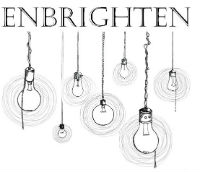
Enbrighten: A Reading Comprehension Game for Children with Special Needs
Recently, I had the privilege of attending the CEC conference in Grand Rapids. While at the conference, I attended a session entitled, “Sane and Savvy Strategies for the Busy Teacher.” While at this session, I listened to the presenters, Erika Lusky and Julie Rains, share a comprehension game called Enbrighton that they created to help students with special needs better understand what they read and develop higher level thinking when discussing a book.
About Enbrighten
 Enbrighten™ is an engaging and thought-provoking comprehension game designed to empower students with the tools necessary to approach and ultimately understand both narrative and informational text. This strategy emboldens students and teachers to establish comprehension as a process of cognition rather than something assessed by an isolated set of comprehension questions.
Enbrighten™ is an engaging and thought-provoking comprehension game designed to empower students with the tools necessary to approach and ultimately understand both narrative and informational text. This strategy emboldens students and teachers to establish comprehension as a process of cognition rather than something assessed by an isolated set of comprehension questions.
Enbrighten™ also encourages the development of metacognition, critical thinking, listening, and speaking skills within the classroom environment. It is designed to act as a supplement to any curriculum and can be used with any preexisting classroom text.
Although the game was developed for a classroom setting, I think there are many ways it could be adapted for parents to use when reading with their children as well. Here is an overview of the Enbrighten Comprehension Game
Materials Needed
- Story at or near Child's ability level (can be slightly above if you plan on reading the text to the child)
- Writing Utensils
- Strategy Paper (can be purchased here: http://www.
saneandsavvystrategies.com/ or you can easily make your own!) - Paper/whiteboard to keep score on
- Rubric (optional)



